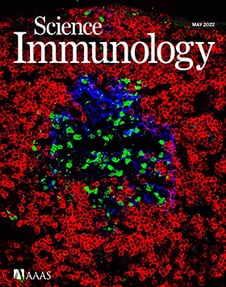Infection Immunology
Introduction
We are continuously exposed to a variety of different pathogens. The dangers than can be posed by a novel pathogen have been highlighted by the recent coronavirus disease 2019 (COVID-19) pandemic. Luckily, we have our immune system to defend us against those intruders. The immune responses can be categorized based on the intruding pathogen into three main categories, determined already in the first hours after an infection by the innate immune system. These immune responses include the type 1 immune response, which protects against intracellular pathogens like intracellular bacteria. Antiviral responses are predominantly mediated by cytotoxic CD8+ T cells and share many features with the type 1 response; type 2 immunity fights against multicellular pathogens like helminths and is important in allergic responses; type 3 immunity is focussed on extracellular bacteria and certain fungi. If the innate immune cells are unable to clear the infection, the adaptive immune response will be mounted specifically for this pathogen which will fully form within a few days. A hallmark of the adaptive immune response is that it can generate a pathogen-specific memory, which can be maintained for years to respond quickly and vigorously against reinfection with the same pathogen.Insights from the Lab
Our lab is widely interested in understanding the immune response to infections with projects focusing on the different types of immune response. We have a particular focus on the cytokines modulating these types and the formation of adaptive immune memory.In the context of antiviral immune responses, we are working on understanding the immune response against the SARS-CoV-2 virus in a cohort of COVID-19 patients in which we have performed an in-depth immunological characterization. Through this approach, we have been able to identify immune signatures from clinical parameters predictive of the development of post-acute COVID-19 syndrome (PACS) (Cervia et al., 2022) in COVID-19 patients and are currently working to further understand the pathophysiology of the condition. In terms of immune memory formation after the disease, we have longitudinally tracked SARS-CoV-2-specific CD8+ T cells over one year after infection in our cohort, using high-dimensional flow cytometry and single-cell RNA-sequencing, and identified signatures in acute COVID-19 predicting long-lived memory fates (Adamo et al., 2021).
Several projects in our lab are focused on the biology of IL-4 and IL-13, two essential cytokines in the context of type 2 immune responses. These cytokines share a receptor system consisting of IL-4Rα, the common γ chain, IL-13Rα1, and IL-13Rα2. We have characterized the abundance and compartmentalization of receptor subunits in the human immune system, and the influence of Dupilumab, a monoclonal anti-IL-4Rα antibody for the treatment of atopic diseases, on this system (Heeb et al., 2022). Additionally, we discovered that IL-4 receptor signalling hampers neutrophil expansion (Woytschak et al., 2016) and induces rapid neutrophil aging and decreased effector functions in mice (Egholm et al., 2022). Furthermore, we observed that this mechanism is conserved in humans by showing that human neutrophil migration and neutrophil extracellular trap (NET) formation is reduced upon exposure to IL-4 in vitro as well as in allergic patients ex vivo (Impellizzieri et al., 2019). This might explain why people with allergic diseases, and therefore a type 2 predisposition, have enhanced susceptibility to bacterial infections.
We are investigating type 3 immune response to extracellular bacteria in different settings. In murine skin infections models, we have further characterized the role of neutrophils and found that CCR7-mediated lymph node migration of neutrophils is important to balance anti-pathogen immune responses and tissue damage (Özcan et al., 2022). In collaboration with the Balgrist University Hospital and the ETH, we are currently working on integrating our gained knowledge from these studies to design novel immunotherapies to treat one of the most common bacterial infections: urinary tract infection.
Relevant Publications
Persistent complement dysregulation with signs of thromboinflammation in active Long Covid
click on the image to read the article or see our Publications section
Type 2 immune predisposition results in accelerated neutrophil aging causing susceptibility to bacterial infection
click on the image to read the article or see our Publications section


